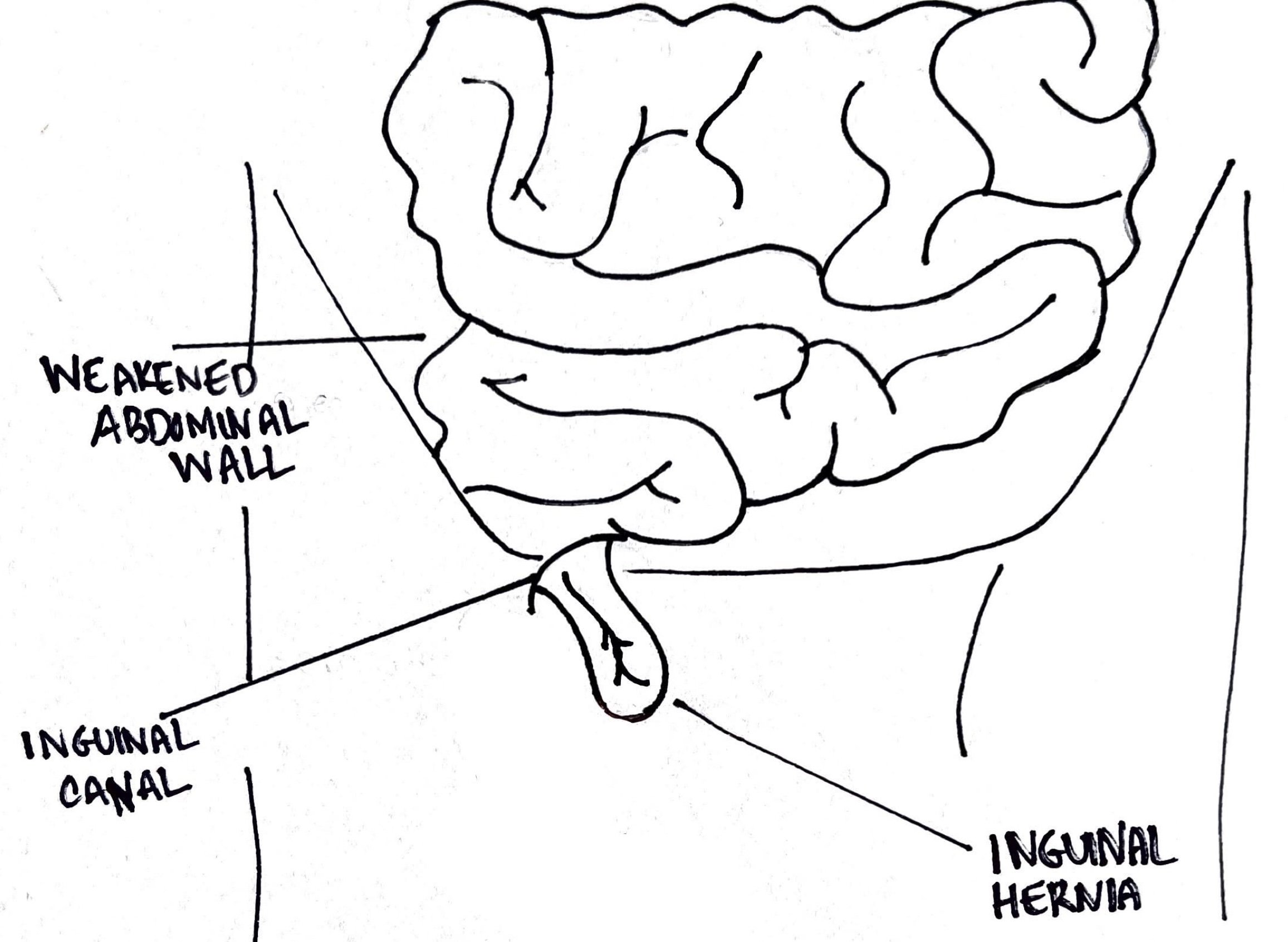Should I Order an Ultrasound for my Patient with Suspected Hernia?
Inguinal hernia
Case: You are seeing a 50-year-old male who feels a lump in his left groin that is uncomfortable and worsens with activity. He stands and coughs while you feel along his left inguinal canal – you feel a soft lump. The right side is normal. The patient lies down, and on repeat exam the lump has disappeared. You suspect a reducible left sided inguinal hernia. Should you order an ultrasound?
What is a hernia? A hernia is a protrusion of organ or tissue through a weakening in the abdominal wall. Inguinal hernias are the most common hernia, and often contain fat or part of the small intestine. Inguinal hernias are more common in men, whereas femoral hernias are more common in women (1). Sometimes hernias are classified as direct (hernia sac bulges through the posterior wall of the inguinal ring) or indirect (hernia passes through the internal inguinal ring following the inguinal canal) (2). There is no utility in differentiating between direct and indirect on physical exam in primary care.
Inguinal Hernia
Diagnostic Approach: The question is, when you suspect a reducible hernia, do you need to order an ultrasound? The simple answer is no – don’t use ultrasound routinely to diagnose clinically evident inguinal hernias. Choosing Wisely suggests the diagnosis of inguinal hernias can be made at the bedside with physical exam, and ultrasound adds little value (3).
I think my outpatient has an inguinal hernia. What next? If the history and physical exam point towards a reducible hernia, and the patient is symptomatic, refer to a local general surgeon (3,4). A general surgeon will be able to help determine optimal management (i.e conservative watch and wait approach versus surgical intervention).
Hernia red flags: Remember to look for red flags for hernia that might suggest incarceration or strangulation: severe pain, non-reducible hernia, or skin changes (i.e. purplish discolouration) – these patients need to be seen in the emergency department.
Is there ever a role for imaging as an outpatient? Rarely. If an occult inguinal hernia is suspected, there may be a role for ultrasound (2). Occult hernias are clinically significant hernias that are not palpable on physical exam (5). Ultrasound is the imaging modality of choice for outpatient occult hernia; it is the cheapest, safest, and most accessible form of imaging (6). CT or MR can be considered in rare situations, but these are probably best left to a surgeon.
Key Take Home Points
History and physical alone are enough to diagnose outpatient inguinal hernias. Do not routinely order ultrasound.
If you diagnose a symptomatic hernia without red flags, refer to a surgeon to help with management.
References/Readings
Goethals A, Azmat CE, Adams CT. Femoral Hernia [Updated 2022 Dec 3]. StatPearls Publishing; 2010 [cited 2023 June 19]. Available from https://www.ncbi.nlm.nih.gov/books/NBK535449/
Jenkins JT, O’Dwyer PJ. Inguinal Hernias. BMJ [Internet]. 2008. [cited 2023 June 19]; 336(7638): 269-272. Available from https://www.ncbi.nlm.nih.gov/pmc/articles/PMC2223000/
Choosing Wisely Canada [Internet]. Canadian Association of General surgeons; July 2022. Available from https://choosingwiselycanada.org/recommendation/general-surgery/?highlight=hernia
Konkin DE. Avoid the use of ultrasound in evaluating clinically apparent inguinal and umbilical hernias. BMJ [Internet]. 2019. [cited 2023 June 19]; 61(7): 276. Available from https://bcmj.org/letters/avoid-routine-use-ultrasound-evaluating-clinically-apparent-inguinal-and-umbilical-hernias
Miller J, Cho J, Michael MJ. Role of imaging in the diagnosis of occult hernias. JAMA Surg [Internet]. 2014. [cited 2023 June 19]; 149(10): 1077-1080. Available from https://jamanetwork.com/journals/jamasurgery/fullarticle/1893806
Wu W, Chang K, Li C, Yeh C, Özçakar, L. Ultrasound imaging for inguinal hernia: A pictoral review. Ultrasonography [Internet]. [cited 2023 June 19]; 41(3): 610-623. Available from https://www.ncbi.nlm.nih.gov/pmc/articles/PMC9262670/



